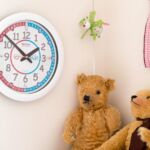
Is your child struggling to contextualise the passage of time on a clock? Understanding this concept can be tricky for young children – particularly if they are unable to see the process’ relevance in the wider world. So, if you are looking for ways to help them grasp this concept and enjoy a fun activity together this summer, learning how to tell the time without a clock is a great way to teach your child about time.
Using the sun’s position
First up: using the sun’s position to work out what time it is. As we all know, the movement of the sun across the sky is actually caused by the movement of the Earth as we orbit the sun, and this daily orbit gives us a good idea of the time at different points in the day.
To get started, take your little one outside in the morning, whilst the sun is still rising in the East. Once they have found the suns’ place in the sky, explain to them that the sun will always be visible in the East before midday, and that if they’re ever stuck without a clock, then they will be able to estimate the time of day by finding the sun’s place in the sky.
At midday, take them outside once again and explain to them that the sun will always be directly overhead at midday, and then finally take them outside again as the sun sets in the West. To conclude the day, explain how, thanks to the rotation and orbit of the Earth, the sun has followed a consistent journey across the sky, and that we are able to estimate what time it is by tracking its movement at different times of the day. This hands-on method helps children to better understand how time follows a consistent pattern and its connection to the Earth’s movements, giving them a tangible representation of time that they will always be able to refer back to.
Making a sundial
Once your child has developed a basic understanding of the sun’s relevance in time-telling activities, you can begin to build upon this understanding by making a sundial. Summertime is the best time to create a sundial as you will have more hours of sunlight to work with, so before your little one wakes up, head out to the garden and find a sunny spot to place a stick upright in the ground. This stick will function as a time telling device, as its shadow length and position will change as the sun’s position changes, making it a great demonstration for any curious child wondering how to tell the time without a clock.
When your child joins you in the garden to begin the activity, mark where the sticks’ first shadow falls with a stone or some colourful chalk. Then make sure that you return to mark the new shadows position at regular intervals throughout the day to create your child’s very own sundial, and make sure that you emphasise to your child that the passage of time is being clearly demonstrated by these markers.
Tracking the North Star
Tracking the North Star is a fascinating way for parents and children of all ages to explore the passage of time by working together to chart the celestial movements. Whilst this concept may seem too challenging for younger children, it follows a similar method to the sundial activity – only this time, we can clearly see that we are the moving object in the night sky.
Start by locating the North Star, also known as Polaris, in the night sky on a warm, clear evening. The North Star is a bright star that remains nearly fixed in the same spot in the night sky whilst the other stars appear to rotate around it due to Earth’s rotation. Point its position out to your child and take a few minutes every hour or so over the next few hours to relocate the star and observe how the surrounding stars appear to change position as the Earth continues to rotate.
Don’t forget to remind your little one that this apparent movement reflects the Earth’s rotation and the passing hours, rather than the movement of the stars, as younger children can become confused if this is not routinely explained to them. Through these observations, children will be able to clearly see the steady, predictable patterns of the night sky and develop their awareness of times’ broader context, as even the stars follow the rules of time every night.
Moon phases
There are two particular ways to use the moon to track the time, and one is best completed over the course of several weeks. However, the less time-consuming activity can be done by tracking the moon’s course over a single night, so if you are planning to do this, start off by noting the time at sunset. If the moon is already visible during this time, then make sure your child clearly notes the moon’s position in the sky as the sun sets.
Over the course of the night the moon will appear to move across the sky as both the Earth and the moon rotate, so regroup once an hour until bedtime to observe the moons’ new position at different times. By comparing the moon’s position to the time of sunset, you can calculate an approximate time based on its position earlier on in the evening.
If you are looking to track the position of the moon across a longer period of time, then engaging your little one in a charting activity is a great way to keep them engaged over the holidays. Begin by observing the moon every night and noting its shape and position, and keep a moon journal to record the moon’s shape each night by shading in the shape. Explain to your child how the moon’s appearance changes due to its orbit around Earth and the varying angles of sunlight hitting its surface to help them grasp longer time periods beyond the daily cycle. Over the course of approximately 29.5 days, the moon goes through its phases: new moon, first quarter, full moon, and last quarter, and by tracking the moon’s phases children are able to see a clear, repetitive system that spans weeks and months.
How to tell the time without a clock
Whilst all of these activities are great opportunities to deepen your little ones’ understanding, it is also clear that the easiest way to tell the time is with an EasyRead clock or watch! As we enjoy watching the movement of the moon, stars, and our own planet through the skies, let’s take a minute to be grateful that our daily routines no longer require us to know how to tell the time without a clock – and that we instead have access to all the time-telling resources that we need.

Are you a parent looking for some extra help for your little one as they learn to tell the time? With our full range of educational clocks, including our children’s wall clocks, we are here to transform the learning process into a fun and engaging activity. With their vibrant colours and educational designs, these clocks are made with all the information and support that a child needs to read the time, so join us as we explore how our clocks will improve your child’s abilities.
EasyRead children’s wall clocks
Many young children find learning to read a clock challenging as they are often confused by the hands and numbers, but mastering this skill early on in life is crucial as it gives them the skills that they need to manage their daily routines and independence.
For many, the numbers on a clock are their first introduction to numbers, and telling the time is the first mathematical concept that they encounter, so if you are looking to give your child the support that they need with their learning, then make sure to opt for our clear, child-friendly clocks today.
Here at EasyRead, we understand the struggles that young children encounter when first learning these skills, and we aim to make time-telling quick and simple with our clocks. So, what exactly does our range offer your child?
1. Our teaching methods
As part of our innovative design, we offer two EasyRead formats which allow you to choose the approach that best suits your child’s learning style and preferences, or your own if they have not yet learned a method.
The 12/24-hour format helps children understand the difference between morning and afternoon times, reinforcing their understanding of the daily passage of time and their own schedules. Alternatively, our Past & To method splits the clock into two halves, making it easier for children to understand minutes past the hour and minutes to the next hour. This intuitive design breaks down the complex concept of time into manageable chunks, ensuring that children can learn at their own pace, and with our clear, colour-coded dials and straightforward labelling of numbers, learning the time becomes an engaging and rewarding experience for every child.
2. Colour-coded segments
The face of each one of our clocks is divided into clear sections and features colour-coded segments that clearly distinguish between the hours and minutes. With distinct colours for each hour and minute zone, we have divided up every minute of the day and made it much easier for children to see the difference between hours and minutes, and therefore the relationship between these two measurements. This supports their understanding of time and helps separate it into quantifiable units that can be tracked and measured by following our methods.
Our clear dials therefore carry all the necessary information that children need to learn to tell the time, eliminating any confusion and reducing the need for additional intuition. Children can simply read the time and practice saying it out loud, making the learning process an accessible and straightforward experience that all young learners are able to master and enjoy.
3. Large, easy-to-read numbers
Did you know that conventional clocks actually contain very little useful information for children who are learning this important skill? The average clock design contains only 12 numbers, and hands which aren’t labelled as minute or hours hands, making the majority of these designs confusing or unclear for young children, and causing them to rely on their instincts or assumptions when reading the time.
With large, prominent numbers, EasyRead clocks ensure that children are able to easily see and identify the time, reducing confusion and enhancing their confidence. The gradual gradient of our numbers follows the movement of time, providing a further visual representation of the passing time, and our bold and distinctive numbers mean that children can quickly and accurately read their kids wall clock from anywhere in the room. This design feature supports children in developing their time-telling skills without frustration by encouraging them to practise often and reinforce their learning throughout their days.
4. Engaging and fun design
The bright, engaging, and colour-coded designs offered by these clocks are intended to capture the attention and interest of children in order to engage them in reading the clock. This turns the process into a fun and engaging activity, rather than a chore that has been given to them by their parents or school, and makes them much more likely to interact with the clock and learn.
Additionally, the silent, no-ticking feature ensures that even the most easily distracted children can focus on reading the time without confusion or distraction, and creates a calm learning environment for all those who engage with our designs. So, if your child is often scared by the task of reading an analogue clock, or reacts with panic when you try to teach them, turn the process into a stress-free activity and help them to concentrate by investing in one of our designs today.
5. Support for parents
If you are unsure of which teaching method is right for your child, then don’t worry – we are here to take the pressure off you with our EasyRead 2 or 3-step teaching methods. These intuitive methods are game-changers for parents, as they break down time-telling into simple, manageable steps that are easy for children to understand and follow.
For example:
⦁ Identify the minute hand and say the number that it is pointing to.
⦁ Say which side of the clock the minute hand is pointing to (past or to).
⦁ Identify the hour hand and say the number that it is pointing to.
All of our EasyRead clocks are designed to be quickly and easily read by using these methods and parents can confidently rely on this method to support their child’s learning. As the ideal first clock to help children learn to tell the time at home, our clocks also function as a valuable resource that can be used by the entire family, so make this new activity a shared, enjoyable family experience with our silent, battery powered clocks today.
Tips for Parents
Once you’ve decided on the best kids wall clock for your home, incorporating its use into your family’s daily routine is quick and simple, but it will have an immediate impact on your childs’ skills.
Start by placing the clock in a prominent location where your child spends most of their time, such as in the kitchen, living room, or playroom, and encourage them to use the clock during their daily activities. This doesn’t mean just reminding them to check the time every so often – rather, it means asking them directly to tell you the time throughout the day, or setting small challenges, like timing tasks, or playing ‘what time is it?’ games. You can also ask them to check the time when it’s time for meals, homework, or bedtime and contextualising the use of the clock in this way during their daily activities will reinforce their practical time telling skills.
No matter what activities you opt for, celebrate your child’s successes and continuous improvement to boost their confidence and keep them motivated to learn. Additionally, our full EasyRead range includes a wide selection of resources to complement our children’s wall clocks, including watches, games, online resources, and bedside clocks, so if you are looking to make the learning process even more effective, check out our full range today.
Our Telling Time Clock Range
With their specialist educational design, engaging design features, and supportive teaching methods, our children’s wall clocks make learning fun and stress-free for all children and their families. So, if you’re looking for an educational clock to support your child and improve their abilities, head over to our online shop and find the best telling time clock to boost their confidence and understanding.

Are bedside clocks a necessity for your child’s room, or are they just another gadget to clutter up their space? Join us as we explore the impact of introducing a clock to your child’s bedside table, and check out our EasyRead alarm clock range that has been specially designed to foster time-telling and time management skills without disrupting sleep.
Children’s bedside clocks
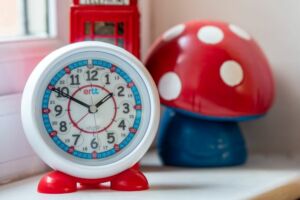
Introducing a bedside clock into your child’s nighttime routine might seem like a simple decision, and it is a great idea to give your child the tools to tell the time themselves as soon as they wake up. However, it can also seem obsolete in a society that has mobile phones within arm’s reach at all times, so if you’re still on the fence about investing in a bedside or alarm clock, let’s weigh up the pros and cons of these time-telling tools.
1. Time-telling
These clocks are fundamentally educational resources, and their usefulness comes from their clear and engaging design that supports children’s learning. Being able to tell time is a fundamental skill for all primary school aged children in the UK, and having an analogue clock readily available as soon as they wake up helps to facilitate this learning process.
This hands-on practice every morning helps children to take responsibility for their own learning, as they can check the time on their own without relying on their parents to tell them the time or even wake them up. This eventually develops into a deeper understanding of the concept of time and its passing, as they will also be able to see the amount of time that they have slept for on the clock or how much time they have to get ready for school, as they become more independent and familiar with the clock.
2. Time management skills
Once a child is able to wake up and immediately recognise a certain time on the clock, they will also be able to understand that times’ placement within the day – whether that is before their alarm goes off, as their alarm goes off, or after. This subtly shifts the beginning of the child’s day from whenever an adult comes to wake them, to a more fixed, tangible time that can be read on a clock.
Owning a clock therefore encourages children to become active participants in keeping track of their daily routines, such as knowing when to wake up, start getting ready, or prepare for bed, and even managing these important tasks in some cases. These regular interactions with a clock, and this early introduction to scheduling and maintaining a routine, not only prepares them for school but also lays the foundation for successful time management in their future.
3. Improved sleep
Unlike smartphones or tablets, which emit disruptive blue light, our silent glow in the dark bedside clock provides a way of checking the time at any point throughout the night without needing to look at a screen. Opting for analogue, silent bedside clocks continues to reduce the amount of screen time our children have and helps encourage better sleep habits.
This in turn helps to establish and maintain a natural sleep-wake cycle that does not rely on digital screens, which not only aids their mental and emotional wellbeing, but also helps maintain their daily energy levels and performance at school.
Potential drawbacks
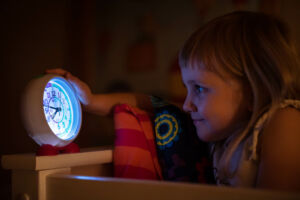
When exploring the impact of these time telling tools on a child’s development and daily schedule, it’s important to consider the potential drawbacks of opting for the wrong clock. From the potential disruption to sleep patterns, to the risk of creating an anxious association with time-keeping, let’s explore why parents need to carefully choose the type of clock they opt for.
1. Sleep disruption
On the cons side, some might argue that introducing a clock into a child’s room can inadvertently lead to sleep disruptions. Bedside clocks with light features, such as glowing numbers or backlit displays, can affect a child’s natural sleep cycle, whilst the ticking sounds may be distracting and keep your child awake at night.
To make sure that every child has access to a clock without disrupting their sleep, we have designed our clocks to address these negative effects. Our EasyRead clocks come with an LED night light and a built-in sensor to control the brightness of the clock face and minimise light interference; or if your child prefers, this light can be turned off completely. Our silent glow in the dark bedside clock is also designed to operate silently, with a silent sweeping movement that eliminates the distracting ticking noise that is common in most other designs.
2. Sleep anxiety
It’s important to consider your child’s personality and sleep habits when deciding whether or not to give them a clock, as some children can become fixated with its display. Constant exposure to the time can lead to anxiety in sensitive children, particularly if they obsess over time during the night or worry about waking up on time. This can affect their ability to relax and fall asleep if they are worried about waking up late for school, or cause them anxiety if they are scared of the loud alarm that has replaced their parents’ voices in the morning.
The child-friendly features of our clocks are designed to reduce these anxieties, and we have replaced the usual alarm sounds with a gentle crescendo alarm, a glowing clock face, and a snooze option for a natural and gentle awakening. With this knowledge, children can fall asleep confident that they will be gradually woken up by a system that aligns with the body’s internal clock and won’t alarm them.
Similarly, if you find your child obsessing over the time or have noticed that they are becoming anxious about oversleeping, you can turn off the clocks’ internal night light and minimise the temptation to constantly check the time. This, combined with a clear demonstration of the clocks’ alarm system to set their mind at rest, reduces their focus on the passing hours and encourages a more restful night’s sleep, safe in the knowledge that they will be woken up when the time is right.
Children’s alarm clocks
Our clocks are thoughtfully designed to meet the needs of children and parents, and to address the common concerns around sleep quality and anxiety with adjustable brightness, quiet operation, and gentle alarms. Whatever the specific needs of your family, our clocks nurture a good sleeping environment that aligns with your child’s wellbeing and daily routines, so if you’re ready to take the next step in your child’s time-telling journey, explore our alarm clock range today.
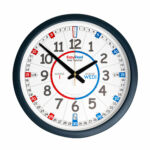
If your child is learning to read a clock for the first time, then they are likely going to have a lot of questions. Whilst the majority of them will probably centre around how clocks work or how they demonstrate the passing of time, your child might start to look outside of their own experience and wonder how different cultures tell time. Different countries and languages can all measure and interact with time in very different ways, so if you or your child are interested in exploring how other cultures learn to tell the time, here is our guide.
Time-telling across the world
Different parts of the world have different, and often unique, ways of interacting with time, shaped by historical, geographical, and social factors. Modern timekeeping is largely uniform due to globalisation and technological advancements which have reduced modern time telling skills to a quick glance at a screen, and so it is easy for us to overlook the importance that time still holds for many cultures across the globe.
Exploring how different people learn to tell the time can reveal a great deal about their societies and the structure of their days, as many local time practices still reflect cultural identities. Whilst in Britain, our timekeeping is primarily used as a way to schedule our daily lives and has little cultural impact, in other areas the way people interact with time can vary depending upon the seasons, the time of day, and any religious holidays or festivals.
These rules, whether clearly displayed across societies or simply implied through practices that have been passed down through generations, nurture the timekeeping traditions of different areas and keep them from fading. So, before we get into a deeper exploration of how cultures across the world learn to tell the time, let’s take a look at how interactions with time differ from country to country.
Interactions with time
Cultural attitudes towards time vary significantly around the world, reflecting deeper values and revealing much about the numerous different ways of life. These diverse attitudes towards time and its passing not only influence daily schedules and social norms but also reflect broader cultural values and priorities, shaping how people interact, conduct business, and manage social relationships.
For example, in countries such as America and the UK, time is viewed as a way to keep track of the different stages of the day and informs which actions we take next, which has resulted in a structured approach to time management and a strong emphasis on punctuality, scheduling, and efficiency. Time in the West exists to keep us on track and manage our tasks, and this strict approach to time is also one shared by several East Asian societies, particularly across Japan and South Korea. These areas often have a considered and measured approach to time, valuing punctuality and structure highly and viewing time as a resource that must be managed wisely. However, it is important to remember that many of these attitudes are unwritten, and can only be observed through daily interactions, rather than through the study of time.
In contrast to these more rigid contexts, where time is money and lateness is seen as an insult or indicative of one’s commitments, many other societies have a more relaxed attitude towards time. Primarily found across Middle Eastern and Latin American cultures, these attitudes are informed more by social factors than strict schedules, and measurements of time are often event related, meaning that the conclusion of an activity is generally more reliant on the judgement of the participants rather than the amount of time allotted on a clock.
By taking the time to observe these different ways of scheduling, planning, and utilising our time, we can explore the different societal and environmental factors that inform our engagement with the concept of time. What may seem unusual, or sometimes rude or wasteful, to one culture is often informed by many centuries of societal development and cultural norms, illustrating the multifaceted nature of time across global cultures. Despite being seen as a universal concept that touches every area of humanity, the ways that we interact with time have been adapted to suit the requirements of different societies across the world: so, no matter where you come from, there is always something to be learned through exploring the different attitudes to time.
Telling the Time
As our understanding of time differs so much depending upon where we come from, it goes without saying that how we learn to tell the time differs greatly as well.
For as long as humanity has been able to observe the sun rising and going down, and the turn of the seasons as temperatures dropped and crops stopped growing, we have been developing ways of tracking it. Ancient cultures such as the Maya and Egyptians developed advanced calendar systems that integrated astronomy and seasonal cycles, which informed our understanding of time and eventually led to the development of a worldwide 12-month calendar based on our planets’ movement around the sun. This shows that the natural progression of time is inherently circular and relies upon continuous natural loops, but over the centuries, we have moved away from astrological ways of tracking time – although there are still cultures who use natural indicators for tracking religious or cultural events.
Time-telling methods vary globally, influenced by cultural, historical, and environmental factors, and these variations remind us that time’s perception is as much a cultural construct as a scientific measure. However, there is one universally accepted and utilised tool that helps us all measure time: the clock.
Clocks
Across the world, clocks are used as a visual representation of the passage of time, and whether we use it to create our schedules or track our time, they are always there to show the hours, minutes, and seconds as they pass.
Throughout the US and Europe, people predominantly use the 12-hour and 24-hour formats on digital or analogue clocks, with many of the historical ways of telling the time long forgotten by the advancement of time-telling resources. The timekeeping practises of many East Asian cultures is also similar to these methods, as they utilise both digital and analogue clocks and the timekeeping system divides the day into 12 two-hour periods, whilst Latin American cultures use the 12-hour format – although often without strict adherence to exact times and with a more flexible, relaxed approach to time.
Both the 24-hour clock and the 12-hour clock represent the same units of time, but the passage of time is displayed in different ways. The 24-hour clock, often referred to as “military time,” is a widely adopted format that eliminates the ambiguity present in the 12-hour clock system by making it immediately clear which part of the day is being referred to. For instance, 18:00 immediately indicates late afternoon or early evening, whereas 6:00 on the 12-hour clock could be early morning or evening and requires the additional specifier of “a.m.” or “p.m.” to clarify. Despite this, the 12-hour format has a long historical identity and is deeply embedded in the daily life and culture of the regions that use it.
Cultural methods
In many other areas of the world, the erasure of traditional methods is not as widespread, and many cultures utilise a blend of traditional and modern methods that reflect their cultural nuances. This is particularly evident in global Islamic cultures, as prayer times are crucial and Muslims are expected to pray up to five times a day. This schedule is maintained year-round, and the yearly calendar also contains numerous religious holidays depending upon the movement of celestial bodies, as the month begins with the new crescent moon in the Islamic calendar, and astrology remains a key focus of their festivals and celebrations.
Similarly, whilst the majority of the Indian subcontinent follows the standard 12-hour and 24-hour clock formats, the landmass still contains rural areas and cultures that utilise traditional time units as cultural measurements. Although they rarely depend upon them for modern-day timekeeping, these traditional and cultural attitudes towards time continue to coexist with contemporary methods despite the rapid global modernisation.
How to tell the time with EasyRead Time Teacher
The enduring popularity of cultural timekeeping methods alongside modern practices highlights the complexity of how humans perceive and manage time, and understanding these varied timekeeping approaches offers valuable insights into the social fabric of different cultures, reflecting each community’s values and routines.
The range of clocks offered by Easy Read Time Teacher reflects this widespread diversity, accommodating the different time-telling styles that shape our daily experiences and interactions. So, whether you are searching for an English, French, Spanish, or Welsh clock to learn to tell the time with, explore our full range today and find the best resources for your needs.
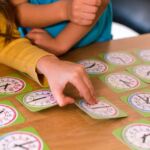
Are your children having trouble telling the time? For many children, learning to tell time is one of the first academic concepts they are introduced to and it can be an overwhelming and complex challenge, which is why we offer a range of interactive games that take the pressure off learning. Whether your child prefers snap, bingo, or wants to try our TwinTime Cards, all of our games are teaching aids designed to walk you through the stages of reading the time and help children tell the time while providing hours of enjoyment. By incorporating elements of play and engagement, these time teaching games will ensure that your kids are excited to learn and practice telling the time, so whether your child is just starting out or needs a little extra practice, these games are here to lend a helping hand.
Learning through play
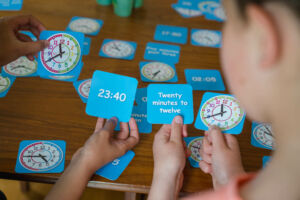
When it comes to teaching children new concepts, it is important to make the learning process interactive and engaging rather than stressing the importance of learning these core skills, as this can be overwhelming for young children. Time-telling is an abstract concept that can be difficult for children to grasp, but as an inherently visual activity, it is easy to incorporate games and activities into the learning process. By reframing this learning as a fun activity, particularly one that is shared with other children or loved ones, children are more likely to retain the information and develop a strong skill set whilst maintaining a positive attitude towards the subject.
At EasyRead, our core goal is to make learning as easy and accessible as possible for people of all ages and abilities. To this end, we have developed a range of time teaching games and teaching aids that are perfect for use at home, in school, or on the go to help children tell the time. Rather than confining learning to desks or the kitchen table, our games are intended to be used as a fun activity for the whole family to enjoy that reinforce our teaching system and make learning easy for all, so let’s explore our range of exciting games together.
1. Snap
Snap is a classic game that has long been one of the easiest games to play, and with our Tell the Time Cards, it is easily adapted to support children as they learn and engage with time. By blending the academic concepts with a fun, stimulating game, parents and children can enjoy a classic game with a twist that can be played by all.
Instead of matching numbers or images, the game revolves around matching cards that share the same time. Each pack of our cards contains 60 playing cards, which between them show 15 different times of the day, for a total number of 4 cards for each time, for a simple game of mix and match that is best played with 3 or more players.
Interested in learning how to play? Here are our instructions:
⦁ Shuffle the cards and deal them all out equally between players, face-down.
⦁ To begin the game, one player turns over the top card from their face-down pile and places it face-up in front of them, reading aloud the time on the card.
⦁ Players repeat this action, one after the other, going clockwise around the group.
⦁ If any two top cards on the players face-up piles read the same time this is a “snap”.
⦁ The first person to say “snap!” and put their hand on the table wins the round. The winner takes all the face-up cards on the table, shuffles them, puts them to the back of their pile and starts the next round.
⦁ The overall winner of the game is the player who is left with the most cards.
Finish up the game by counting up the cards and enjoy a simple yet educational game again and again with our Level 1, Level 2, and Level 1 & 2 sets.
2. Matching pairs
Matching Pairs is a popular memory game, and our Time Cards modify this classic game to teach children how to read the time. Instead of matching identical pictures, our games encourage children to match cards with the same time displayed on them.
This game can be played at home with one or more players, or at school with a classroom of players by following these instructions:
⦁ Shuffle all the cards and spread them across a table face-up.
⦁ Set a timer to three minutes. The player should find as many pairs of matching cards as they can within the time constraint. Two cards showing the same time makes a pair.
⦁ After the three minutes the players should read aloud the times on their matching pairs and count their pairs.
⦁ If there is more than one player, repeat this process for each player and create a league table. The overall winner is the player who finds the most pairs in three minutes.
As a straightforward visual game, this game and Snap are best played with our Level 1 cards, but if you are feeling more confident, then why not try playing with our Level 2 cards to match the time as either minutes past and to, or by how it would appear on the 12/24 hour clock.
3. Buddy-Up
Buddy-Up encourages collaborative learning and teamwork, and in this game, children are encouraged to develop their understanding of how time appears on a clock. The aim of this activity is for all players to find their “Time Buddy”, or whoever has a card that matches their own, and in order to play each participant must be able to clearly identify the time on their own card. This game is best played with a large group of players so try it today by following the instructions below:
⦁ Sort the cards so that each player has one card and a “Time Buddy” eg, with a class of 30 sort 15 pairs.
⦁ Hand a card to each player, players must not show each other their card.
⦁ To find their “Time Buddy”, players must ask each other, ‘what time are you?’
⦁ Players must reply with the time on their card.
⦁ Players who find their “Time Buddy” must form a pair. The game ends when all the players have paired up.
This game not only improves children’s time-reading skills, but it also helps them develop communication and social skills, so pick up a set of our cards today.
4. Bingo
For another time-teaching twist on a classic game, Bingo is easily adapted to help children read and understand time by playing with our cards. As a slightly more complicated game, this particular activity is best played with up to 6 players or groups, and instead of calling out numbers, the caller calls out a list of times and the players mark off the corresponding time on their bingo cards, like so:
⦁ Shuffle all the cards and deal out 9 to each player/ group, face-up on a table.
⦁ Choose who is going to be the ‘caller’. The caller must call out a time from the ‘times list’.
⦁ If any of the players/ groups have a card that matches the time the caller reads out, they should turn it face-down on the table.
⦁ The game is won by the player/ group who is the first to have all their cards face-down. When this happens, shout ‘bingo!’
⦁ The caller should check that the cards of the winning player/group match with the times that have been called out. If the cards do not match, the game should resume.
This game helps children practise reading and recognising different times in a fun and interactive way, and also encourages focus and attention to detail as the players must listen carefully to the caller and quickly locate the corresponding time on their bingo cards.
5. TwinTime Cards
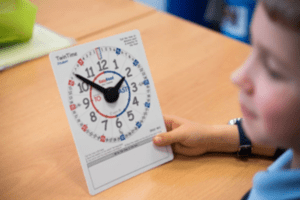
Alongside our time-telling cards, we also offer our specialist TwinTime Student Cards for a hands-on approach to teaching time and introducing primary school numeracy. These innovative cards are double-sided and feature a Past & To dial on one side and a 24-hour time dial on the other, with independently movable hands. Made from high gloss write on wipe off PVC sheet, pupils are encouraged to write down the time displayed on the clock, fostering hands-on learning and putting pupils in control of all their learning.
Ideal for mastering time skills, these cards also facilitate learning to count forwards and backwards from 30, understanding fractions, and counting in 5s and 10s. Available in 15 x 20 cm for pupils and 32 x 39 cm for teachers or adults, they also facilitate classroom-wide demonstrations, as well as one-to-one sessions between parents and children, and are available individually or in boxes of 10 for group activities.
These cards not only help children tell the time and practise reading the time, but it also improves their ability to quickly calculate time intervals and understand the relationship between different times.
Games to help children tell the time
By incorporating these interactive and enjoyable time teaching games into their learning routine, you can make the learning process a fun and memorable experience for your child, so develop their social skills and reinforce their abilities by picking up a pack of our cards and start playing today!

If your syllabus for the new year includes teaching your pupils to tell time, or you are keen to hone their new skills in 2024, then make sure that your classroom is equipped with our classroom clocks and teaching resources. Designed with functionality and accessibility in mind, our clocks are the perfect tool for teaching young children how to apply their new skills and knowledge. Featuring clear, easy-to-read designs and robust structures to withstand the wear and tear of a busy classroom, these clocks are specifically designed as a visual aid to help pupils grasp the concept of telling time, so make time teaching a group effort this new year with our essential teaching clocks.
The importance of the right classroom clock
The right clock for a classroom plays a vital role in teaching children how to read the time and in creating a learning environment. They serve as a visual aid that helps pupils understand the concepts of minutes, hours, and seconds, as well as the relationship between these three and how this creates the passage of time. By having a teach the time clock prominently displayed in a classroom, pupils are able to practise reading and interpreting time in a real-life context, as well as develop core life skills.
Classroom clocks promote time management skills. By having a clock displayed prominently in the classroom, pupils develop a sense of time awareness, and learn how to allocate and manage their time effectively whilst completing a task, meeting deadlines, or remaining punctual to lessons. Clocks also help to create a structured learning environment, as teachers can use them to establish a clear routine that pupils are expected to understand and follow. This includes clearly showing the time left for a specific task or lesson, helping to keep the class on track and minimise disruptions, as well as reduce the number of questions around the time or how long is left in a lesson.
By having an easy-to-read clock prominently displayed, pupils are able to practise reading and interpreting time in a real-life context, so read on to explore the unrivalled benefits offered by our specialist range of clocks.
EasyRead Classroom Clock
Our EasyRead Clocks are designed specifically for classrooms, as their clear, large design makes them visible from all areas of the classroom and ensures that all pupils, regardless of their seating position, can easily access the time.
The simple and engaging design of our clocks is perfect for nursery and primary school classrooms, as well as those who are just starting to learn about the time, as a hands-on teaching aid that introduces the concept of time. Depending upon the preferred method of your school or pupils, your clock can show either the “12/24 Hour” method or the “Past & To” method, as each design has been specially made to make it easy for children to learn to read the time. This simple teaching system contains all the relevant scaffolding that a child needs to confidently recognise numbers, identify the hour and minute hands, and piece together the method to reveal the correct time, and is a great way to start your class on the time-telling elements of the school curriculum. To help with this, the curriculum notes are printed on the back, providing you with a handy reference while teaching, and the hanger makes it easy to securely rehang the clock after a demonstration.
Our specially designed school clocks are made to save time and reduce frustration for pupils and teachers alike, as well as helping pupils build confidence in their own abilities. By hanging one of our specialist clocks in your classroom, you can eliminate the need for pupils to constantly ask you to tell them the time. So, with our clocks, you and your colleagues can focus on teaching, knowing that you have a reliable and effective tool to support your teaching and reinforce your lessons on time.
EasyRead Playground Clocks
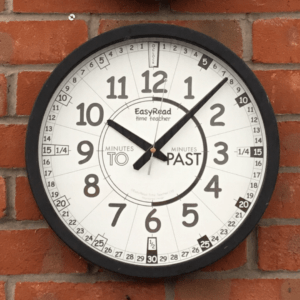
The design of these clocks is the same as the rest of our range, including the option to choose either the “Past & To” or “12/24 Hour” method, depending upon the time format taught by your schools’ curriculum. This standardised design allows for a continuation of the pupils’ learning across indoor and outdoor spaces, reinforcing what they have learnt and offering them the ability to read the time themselves, no matter where they are.
With their battery-operated mechanism and robust designs, our playground clocks are built to withstand the elements throughout the school year. The weatherproof powder-coated steel frame and toughened glass lens protects the face from any potential damage, and means that these clocks will continue to function come rain or shine, providing a reliable and accurate time display for your pupils. So, whether these weather-proof clocks are installed in the playground, entrance ways, school garden, or onsite sports facilities, teachers and pupils alike can incorporate time-telling challenges into various outdoor activities, so add one of our clocks to your outdoor space and watch as learning and fun blend seamlessly together.
Other teaching tools and educational activities
To further enhance student learning, our range can be easily combined with our range of educational resources for a streamlined, standardised approach, and additional learning opportunities for pupils. Here at EasyRead Time Teacher, we offer a range of resources that complement the methods used by our clocks, including:
⦁ Tell the Time Cards: These cards are designed to work in conjunction with a school clock to enhance the learning experience and allow pupils to practise telling time through engaging games. These cards feature 15 different times of the day, and pupils of all ages can use these educational resources to play a range of games, including snap, matching pairs, buddy-up, and bingo, to practise their new skills and reinforce their understanding of time in a fun and engaging way.
⦁ TwinTime Cards: The twintime cards are a particularly useful interactive learning resource, as they allow pupils to compare and contrast different times, further developing their understanding of the passage of time. They are a hands-on learning tool that have been specifically designed for primary school children to work through time-related activities and challenges, by adjusting the moveable hands to visualise the relationship between the big and small hands.
⦁ EasyRead Classroom Set: For teachers who want a comprehensive set of teaching resources, the EasyRead Classroom Set is the perfect choice. This set includes an EasyRead clock, tell the time cards, and twintime cards, equipping your classroom with everything you need to create a dynamic and interactive learning environment.
By integrating our clocks with these additional teaching resources, visual aids, and interactive activities, teachers across the country can prepare their classrooms for a year of hands-on learning and ensure that their pupils have access to the resources they need to reinforce their understanding of time.
Enhancing student learning with the right classroom clock from EasyRead Time Teacher
Teaching pupils to read the time is an essential skill, and our classroom resources and clocks are on-hand to support your pupils and maximise their learning. These resources are designed with accessibility and functionality in mind, featuring clear, easy-to-read designs and robust structures that can withstand the demands of a busy classroom, so be sure to promote a multi-faceted approach to learning in 2024 and give your pupils the opportunity to reinforce their learning with our full range of classroom clocks and teaching resources.

Are you struggling to support and encourage your child who can’t tell time? From the ages of 6 and 7, your child will be taught this life skill in schools, but if your little one is struggling or falling behind, then don’t worry – whilst this is likely a source of worry for your family, teaching children to independently read the time is often a challenging task and will probably require the use of additional resources and extra support. That’s why, at EasyRead Time Teacher, we are dedicated to making learning how to tell the time an accessible and engaging experience for any child or adult who can’t tell time. From engaging aids, to our EasyRead clocks, our resources and interactive tools make learning a fun and engaging experience and support parents and children alike to become confident in telling time.
The struggle of telling time
Learning how to read and understand the time is a crucial skill for any young child’s development. Not only is it important for their syllabus and academic development, but it also helps them understand the concept of the passing of time, manage their daily routines, and develop a sense of responsibility. However, some children may find it challenging to grasp this concept, leading to frustration, a sense of falling behind their peers, and concerns around their own capabilities. If your child can’t tell time or is struggling, then it’s important to identify the signs early on and understand the common reasons behind their difficulties.
The most obvious sign that your child is struggling with telling the time is their inability to read analogue clocks or understand the relationship between the hour and minute hands. For young children, many of the challenges come from low level confusion that arises in the moment, rather than a deep-rooted confusion around the passage of time and the overwhelming responsibility of learning to track this passage. However, if your child’s confusion comes from being unable to understand the relationship between numbers and time, or struggling with concepts like half past, quarter past, and quarter to, then their learning will greatly benefit from the inclusion of resources, games, or real-life examples into their daily routine. Additionally, if your child is consistently late or struggles to manage their personal time effectively, it could be an indication that they need additional support to develop their understanding of time.
Supportive strategies to help your child
If your child is having trouble developing this life skill, don’t worry – these difficulties are much more common than many parents realise, and there are several strategies you can employ to support their learning and help them become confident in this essential skill:
1. Use visual aids and resources: Visual aids, such as our EasyRead clocks, provide a tangible representation of time and make it easier for children to understand the relationship between the hour and minute hands. Our clocks and resources feature colour-coded circles for the different hands and clear labels for the 12/24 hour and past and to methods, making it easier for children to break down the overwhelming concept of time into smaller, actionable steps that make it easier to interpret the time.
2. Create a daily routine: Establishing a consistent daily routine is a quick and accessible way to help children develop their understanding of time progression and how it relates to their daily activities. Set regular times for meals, bedtime, and activities, and involve your child in following the schedule by encouraging them to remind you of the time, or by regularly asking them what time they perform a specific task and how much time they have left before then.
3. Break it down: Time is an overwhelming concept for small children, especially when faced with analogue clocks and complex concepts. In order to break down the learning process into smaller, manageable steps, start by teaching them to identify the hours, then move on to the half-hour, quarter-hour, and so on, backed up by consistently asking them to practise telling you the time. Gradually introduce more complex concepts as they become comfortable with the basics, including switching to the 12/24 hour method or introducing a digital clock.
4. Make it fun: Learning should be an enjoyable experience for children, particularly when learning an important skill that they will need to use for the rest of their lives. Incorporating games, activities, and resources into their time-telling practice will help your child come to see time as a puzzle to be solved, or an engaging activity, rather than a complex or overwhelming task, and will develop a positive relationship with managing their own time.
By employing these supportive strategies, you can help your child overcome their difficulties and develop a solid foundation in reading and understanding time. If you’re interested in exploring key educational resources to boost their understanding and practise reading the time, explore our recommendations below.
⦁ Using clocks for teaching and practising
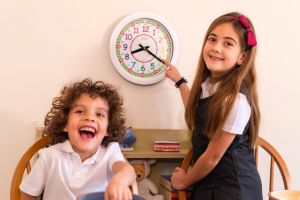
Analogue and EasyRead clocks are invaluable tools when teaching children to understand and practise their time telling abilities. They provide a clear and easy-to-read display of the time, down to the minute, making it simpler for children to identify the current time quickly and with minimal confusion. Introducing clocks throughout your home creates a learning environment in which your child is constantly exposed to time-telling opportunities, without becoming overwhelmed by these new concepts, so here are some of our key recommendations.
- EasyRead Wall Clock: Hang this wall clock in your child’s bedroom or in their play area for the ideal introduction to reading the time. With their clear, easy-to-read designs and silent operation, our colourful clocks use either the past & to or 12/24 hour teaching methods and are perfect for the whole family to use to support your little ones’ time-telling skills.
- EasyRead Alarm Clock: Our alarm clocks feature a large, clear display with a simple design, silent sweeping movements, and an LED nightlight for a discreet and useful addition to your child’s bedside. They’re perfect for teaching children the basics of time-telling and means that they are able to read their clock if they wake up in the middle of the night, or if they wake up before it is time to get out of bed. They also feature a crescendo alarm and a built-in light sensor that matches the brightness of the room according to your child’s preferences.
- EasyRead Wrist Watch: A wristwatch is a portable and practical way for your child to practise reading the time on their own terms throughout the day. With their clear, colour-coded dials and simple teaching method, our watches make it easy for children to practise their time-telling abilities wherever they go, making it the ideal first watch for children aged 4 and above.
By incorporating our clocks into your home decor and your child’s daily routine, you can create a supportive environment for your child to practise and reinforce their time-telling skills.
⦁ Using games to practise and reinforce time-telling skills
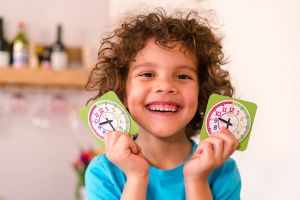
Learning to read a clock doesn’t have to be a tedious task, particularly if your child is struggling more than their peers or is becoming overwhelmed by having to practise a skill that they don’t yet fully understand. To combat this, there are numerous fun activities and games you can incorporate into your child’s learning that will not only engage them, but also provide opportunities for them to practise and reinforce their time-telling capabilities whilst playing with friends or family.
If this sounds like the best course of action for you to take with your child who can’t tell time, then here is a rundown of our recommended activities and games from our range:
- Tell the Time Cards: Our cards feature engaging, interactive designs that support children to practise reading and interpreting the time at home. Our easy-to-use cards feature different times of the day and can be played in various ways, such as snap, matching pairs, buddy-up, and bingo, and are designed to cater to the abilities and needs of different age groups, ensuring that children of all ages can engage and learn at their own pace.
- TwinTime Cards: Our TwinTime Cards offer a unique and hands-on approach to interactive time telling practice. With a Past & To dial on one side and a 24-hour time dial on the other, our double-sided cards allow children to independently move the hands to display different times, and then quiz family members or friends on the displayed time. This game enhances children’s understanding of both methods of reading a clock and encourages critical thinking, but also supports other skills like counting forwards and backwards, learning fractions, and counting in 5s and 10s.
By incorporating these activities and games into your child’s learning routine, you can make the time-telling process an enjoyable and interactive experience.
⦁ Collaborative learning

Working with your child’s teacher to support their learning and develop a coordinated approach to practising is a proactive way to ensure your child has all the support and resources that they need. Teachers have access to various resources and strategies that can complement your efforts at home, including playground clocks and classroom sets, so, take the time to discuss your child’s struggles with their teacher and work together to identify the best strategies and resources to support their learning. This collaboration between home and school will provide your child with a well-rounded and consistent approach to learning this important life skill, giving them the best possible opportunity to overcome their struggles.
Celebrating your child’s progress with EasyRead Time Teacher
Teaching and supporting your child may present challenges, but with patience, support, and the right resources, they can develop this essential skill. If your child currently can’t tell time, then be sure to celebrate their progress, no matter how small, and continue to utilise our range of resources and aids to make the learning process engaging and enjoyable for both you and your child.
Explore our full range today, and equip your child with the resources and confidence they need to develop valuable time-management skills that will benefit them throughout their lives.
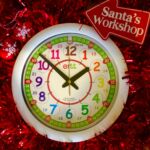
Are you looking for the perfect educational gift to put under the Christmas tree this year? Whether your little one has recently begun learning how to tell the time, or if you are planning on teaching them in the new year, a children’s wall clock is a meaningful and practical gift that will give them the best introduction to telling the time. With age-appropriate designs and engaging visuals, our children’s clocks include all the information a young child needs to begin learning how to tell the time, so read on to explore why one of our specialist learning tools should be on your Christmas shopping list this year.
Educational Design
Combining the joy of learning to tell time with a fun and colourful design, our EasyRead children’s clock is the perfect addition to any child’s bedroom or playroom. Designed with children in mind, and specially created to simplify the time-teaching process, our clocks feature large, easy-to-read numbers, and big black hands that clearly stand out against the colourful background to precisely demonstrate the exact time.
This simple and intuitive design makes it easy for children to practise telling the time and functions as an excellent educational tool for this essential life skill. Depending upon the requirements of your little one, our clocks are available with the two simple teaching methods ‘minutes past & to’; and ’12/24 hour’, and the EasyRead 2 or 3-step teaching method clearly leads your child through the process of learning to tell the time. This clear educational design also carries all the information children need to learn how to tell the time, including every hour and minute of the day on the 12/24 hour clock, whilst the minutes past & to design is clearly divided into 4 quarter-hour sections. Both of these methods allow children to quickly and easily identify the minute and hour hand, and to understand how both hands work together to demonstrate the passage of time, rather than simply reading the hands without understanding how they represent a specific moment in time.
Our designs go deeper than surface level reading, and with our easy teaching methods and visually-engaging, clear clock faces, your child will be able to learn how to read the time quickly and easily this Christmas.
Excellent Decoration
Our children’s wall clocks are not just learning tools to help your child develop their time-telling skills; they also serve as visually appealing decorations for your child’s room. With their bright and colourful design, our clocks are designed to make learning to tell the time an enjoyable and engaging experience for kids of all ages whilst helping to add a touch of fun and child-friendly decor to the room.
The clock is available in a range of colours and designs, so you can choose the perfect one to match your child’s room or personality, as well as their preferred time-telling method. Whether they would prefer a subtle, simple white design, or our red & blue or rainbow faces, our colourful design brighten up any bedroom, and the large face size makes it easy to read from across the room, giving your child access to the exact time no matter where they are in the room.
With bright colours and age-appropriate educational designs, our children’s wall clocks make learning to tell the time an enjoyable and engaging experience for kids of all ages, whilst helping develop their cognitive and organisational skills.
Establish Routine
As we all know, a child’s routine is created for them, either by a parent or carer, or by their nursery or school. As the majority of their time is planned out for them, children often don’t have a clear understanding of the passage of time or the significance of allocating time to different tasks throughout the day until they come to learn how to tell the time. By investing in a wall clock for your child, you can introduce them to these wider concepts in their own time, allowing them to develop their own understanding.
By having a visual representation of the passing hours on their own bedroom or playroom wall, children can establish a sense of routine and structure in their day as they learn to read the time. They can observe how their different activities correspond with the movement of the hands on the clock face, which is also an excellent way to introduce them to the concept of time management. This introduction can be particularly beneficial during the Christmas holidays, as the children will not have their daily routine from school or nursery and may be off their usual schedule. They can instead make their own, by allocating time for reading, playing, or spending time with family, or simply by observing the passage of time during the activities and explaining how much time has passed during each event. Similarly, the Christmas holidays are an excellent opportunity to use their free time to practise learning how to tell the time and to arrange a variety of festive time-telling activities, such as counting down how many hours until Father Christmas visits, or until they visit family on Christmas day.
Investing in a durable, reliable, and engaging clock that has been specifically designed to support children’s learning and development is an excellent way to prioritise your child’s cognitive development and time-telling skills. By introducing them to these skills now, you can ensure that they have developed a familiarity with the passage of time, and are ready to hit the ground running with their new skills once they head back to school or nursery, ready to build on their knowledge and excel at telling the time.
Give the gift of time with an EasyRead children’s wall clock
With its simple design, bright colours, and easy-to-read numbers, our EasyRead children’s wall clock is the perfect Christmas gift to support your child in learning how to tell the time. Our children’s wall clocks are designed with children in mind, helping your little ones develop essential skills while adorning their room with style, so why not add this engaging and practical educational gift to your shopping list.
Explore our range of children’s clocks today, or check out our EasyRead watches and alarm clocks for more excellent stocking fillers.

Are you searching for the perfect children’s first watch this autumn? Learning how to tell the time is an important milestone for children of any age, and having a first watch makes this process easier and more accessible. When buying a children’s first watch, there are several key factors to consider, including durability, educational design, and special features such as swappable straps or water-resistant properties. Investing in a reliable, educational kids first watch involves considering much more than just the time-telling design, so read on as we explore the top 5 things to consider when choosing a children’s first watch.
Preferred Method
When it comes to teaching children how to read time, the method used on the watch face plays a crucial role. Many primary schools teach children how to tell the time on a standard wall clock that uses the Past/ To method, as this is particularly helpful for younger children who are just starting to grasp the concept of time. However, if your child’s school uses the 24-hour method, or you prefer to use that method yourself, then our EasyRead watch range includes the option to choose your preferred method for your children’s first watch.
It is always the best choice to opt for a watch that uses the method that you and your child are most familiar with and comfortable using. No matter what method you choose, our watches are specifically designed to make learning to tell time easy and fun for kids, with each minute of the hour, and each hour of the day, being clearly marked to support your child’s learning needs.
Educational Design
Children’s watches should not only serve the purpose of telling time, but also offer educational value, and so functionality and educational ability should be the main consideration when choosing a children’s first watch. Look for watches that incorporate educational elements into their design, such as additional numbers, concise differentiation between the minute and hour hand, or unique designs that clearly demonstrate the progress of time.
All of our EasyRead watches feature clear numbers and bold graphics, making it easy for children to recognise and understand the concept of time as the hands move across their individual rings. These separate rings, along with our bright colours and easy-to-read design, makes practising telling the time a more engaging and enriching experience for your child, and supports them to learn and develop as they practise.
Clear and Engaging
Children are naturally drawn to vibrant colours and eye-catching designs, and this visual stimulation can support their development and boost their learning. By opting for a children’s first watch with a clear, visually appealing design that captures their attention, you can encourage your child to engage with their new watch and begin to develop an interest in telling the time. This visual interest will also encourage them to pay attention to how the hands move around the watch, allowing them to monitor the passage of time on their own and develop their understanding of how the watch displays this natural process. Similarly, by opting for an EasyRead design with bright, playful colours, and clear colour-association between key elements of the watch, you can gift your child with a watch that is more exciting and visually interesting than other options and encourage them to wear it regularly.
Durability and Water Resistance
If your little one regularly attends after-school activities, or spends a lot of time enjoying the outdoors, then they will likely need a watch that can withstand their daily adventures. All of our watches are built to be durable, and to accommodate the active lifestyles of young children, with a 1-year guarantee across our range.
Additionally, if your child enjoys swimming classes, or loves playing in the rain, then our water proof, scratch-resistant watches are the perfect choice. Built to withstand more than just accidental splashes or brief submersion, our water-resistant watches have a water resistance rating of up to 30 metres so that your little one’s watch will continue to function even in unexpectedly wet conditions.
Comfort and Adjustable Straps
Comfort is an essential factor to consider when selecting a children’s first watch, as they will likely only routinely wear a watch that is comfortable and easy to put on. All of our watches come with adjustable straps, making it easy to find the perfect fit for your child’s wrist and easily resize it as they grow.
The soft and breathable nylon used in our spare straps ensures maximum comfort, even during extended wear, and the durability of our materials and stainless steel buckle means your child is well-equipped to practise telling the time wherever they go. Our range includes a range of colours, designs, and patterns to suit your child’s developing tastes and style preferences, and to encourage them to wear their new favourite accessory regularly to develop their confidence and practise their new time management skills.
Children’s First Watch with EasyRead Time Teacher
Finding the perfect children’s first watch for your child that ticks all of their boxes and meets their individual needs is easy with EasyRead Time Teacher. Our range prioritises educational designs and special features to create watches that empower your child to confidently tell the time and develop their skills, so whether you are searching for a watch that aligns with your child’s school curriculum or suits their active lifestyle, explore our range today and find the perfect children’s watches for your little one.
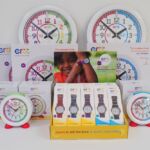
Are you struggling with how to tell the time as an adult? Whether you have always struggled with telling time or you want to improve your time-telling abilities, then our resources are here to help you master this essential skill. We understand the importance of clear and simple time-telling methods, and our range of time-teaching watches, clocks, and innovative aids are designed specifically to help adults learn how to tell the time.
How to Tell the Time as An Adult
Learning to tell the time can be a daunting task, especially for adults who may have missed out on mastering this skill during their childhood years. Here at EasyRead Time Teacher, our team recognises this need and offers a range of specialist resources designed to support adult learners. Whether you prefer a traditional clock, a stylish watch, or interactive games and aids, EasyRead Time Teacher has you covered.
Clocks
Our EasyRead clocks are the perfect addition to any kitchen, office, or living room, and with their sleek design and range of colours, our clocks blend into any interior decor. So, whether you prefer a classic white clock or a vibrant red one, there is a clock to suit your personal taste, and with their silent sweep motion there is no distracting ticking sound, allowing you to focus on telling the time without any unnecessary noise.
The unique design of the clock contains all the information you need, ensuring that you can easily read the time at a glance. The large, clear numbers on the dial make it easy for adults to distinguish between the hours and minutes, eliminating any confusion that may arise from more complex clock designs, and our clocks are available with either the ‘minutes past and to’ or ’12 /24 hour’ method, depending upon which method you are most comfortable or familiar with.
Explore our range of wall clocks and alarm clocks and pick the best option for your unique requirements.
Watches
For adults who prefer a more portable time-telling solution, our EasyRead watches are the perfect choice. Available in a wide range of colours, with the option of a fully waterproof model, EasyRead has a practical and stylish watch to suit every individual’s taste and requirements. With easy-to-use, adjustable straps, you can adjust the strap to fit your wrist comfortably, and swap them for different colours depending upon your outfit. The straps are also easily changed, allowing you to switch between different colours and patterns to match your mood or outfit, and with up to medium adult size, these watches provide a comfortable fit for most individuals.
The watch face itself is designed with simplicity and clarity in mind. The large, bold numbers make it easy to distinguish between the hours and minutes, ensuring that you can accurately read the time, and the clear labelling of “past” and “to” also helps adults understand the concept of time progression, making it easier to interpret the exact time displayed on the watch.
Master this essential life skill with our range of EasyRead watches.
Games & Aids
Sometimes, a little extra practice and reinforcement can go a long way in learning how to tell the time as an adult. We offer a range of interactive resources, games and aids, that are specifically designed to make the learning process fun and engaging to help reinforce your understanding of time-telling concepts and improve your overall proficiency.
One of our most popular games is the Tell The Time Card Game, which combines the fun of a traditional card game with the educational aspect of learning to tell the time. These cards can be used to play various games including snap, matching pairs, and bingo, so you can get the whole family involved. Each pack contains 60 playing cards showing the different times of day and by matching the digital and analogue times on the cards, players can improve their ability to read and interpret different time formats, making them a versatile tool for adult learners.
In addition to our Tell The Time Card Games, we also offer TwinTime Cards to support adults in their time-telling journey. These aids are a hands-on, double-sided teaching resource that features a Past & To dial on one side and a 24-hour time dial on the other side, with moveable hands on both sides. These cards are made from wipeable PVC and have a space below to write the time displayed on the clock, designed to provide additional practice and reinforcement and are also a great tool for practising fractions and counting backwards if this is an area in which you could benefit from additional practice or support.
We understand that every individual learns how to tell the time differently, which is why our games and aids cater to various learning styles. The visual nature of these aids helps adults develop a stronger understanding of time-telling concepts and enhances their ability to read and interpret different clock formats, so no matter your preferred method of learning, there is an EasyRead game or aid that can help you on your time-telling journey.
Explore our range of games, aids, and resources today.
Learn How to Tell the Time with EasyRead Time Teacher
Learning how to tell the time as an adult does not have to be a complex or daunting task. With our range of specialist resources, you can confidently improve your time-telling abilities and master this essential skill with the tools you need to succeed, so embrace the simplicity and clarity of our innovative solutions today.

















